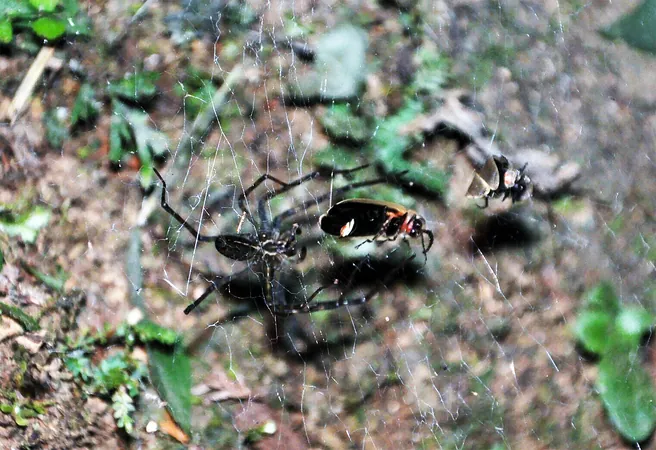
Unveiling the Secrets of Young Cowbirds: Are They Learning from Strangers?
2025-07-07
Author: Daniel
The Fascinating World of Cowbirds
In the avian realm, few behaviors are as intriguing as that of the brown-headed cowbird (Molothrus ater). Known for their unique brood parasitism, these clever birds lay their eggs in the nests of other species, leaving the unsuspecting hosts to raise their young. This unconventional approach raises an important question: how do young cowbirds learn to navigate their world without parental guidance?
A New Study Sheds Light on Cowbird Behavior
A groundbreaking study published in the journal Animal Behaviour reveals that juvenile cowbirds, upon leaving their host nests, are actively seeking out adult female cowbirds to learn essential skills like foraging and mating. This quest for knowledge is crucial for their survival, given their atypical upbringing.
Research Insights from Illinois
Researchers conducted a three-year study in east-central Illinois, tracking 122 adult cowbirds and seven juveniles. By capturing adult-juvenile pairs and analyzing their genetic ties, the team aimed to understand the social dynamics between the two groups. Surprisingly, out of the seven juveniles, only two had identifiable parental links in the sample, with no evidence of them being captured alongside their parents.
A Preference for Female Role Models?
What’s particularly striking is that young cowbirds showed a strong preference for associating with adult females, despite a predominance of males in the adult population. This peculiar tendency suggests that juvenile cowbirds might instinctively gravitate towards adult females, drawn in part by their similar plumage and the attraction to the distinctive calls made by the females.
Implications for Learning and Development
The study offers new perspectives on cowbird social interactions, challenging previous beliefs that juvenile and adult pairs were typically related. Although the sample size was modest, the findings raise important questions about the role of genetics in these interactions. Could it be that the allure of female adult cowbirds is pivotal in teaching the young how to behave and thrive in their environment?
Looking Ahead: Future Research Directions
While the current findings are compelling, the researchers acknowledge the need for further studies. Future research may explore whether young cowbirds engage more with male adults as they mature, as the interactions observed in this study were limited to early development.
Conclusion: A Striking Social Learning Mechanism
As we unravel the mysteries of cowbird behavior, it becomes clear that young cowbirds are not just passive learners but are actively seeking out role models that could help them forge their identities in a world where they’ve been raised by others. These discoveries not only enhance our understanding of this unique species but also shed light on the broader implications of social learning in the animal kingdom.



 Brasil (PT)
Brasil (PT)
 Canada (EN)
Canada (EN)
 Chile (ES)
Chile (ES)
 Česko (CS)
Česko (CS)
 대한민국 (KO)
대한민국 (KO)
 España (ES)
España (ES)
 France (FR)
France (FR)
 Hong Kong (EN)
Hong Kong (EN)
 Italia (IT)
Italia (IT)
 日本 (JA)
日本 (JA)
 Magyarország (HU)
Magyarország (HU)
 Norge (NO)
Norge (NO)
 Polska (PL)
Polska (PL)
 Schweiz (DE)
Schweiz (DE)
 Singapore (EN)
Singapore (EN)
 Sverige (SV)
Sverige (SV)
 Suomi (FI)
Suomi (FI)
 Türkiye (TR)
Türkiye (TR)
 الإمارات العربية المتحدة (AR)
الإمارات العربية المتحدة (AR)